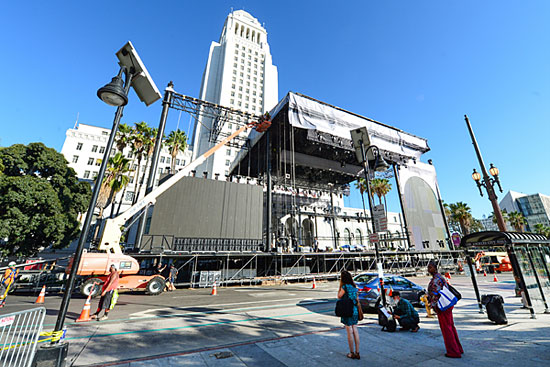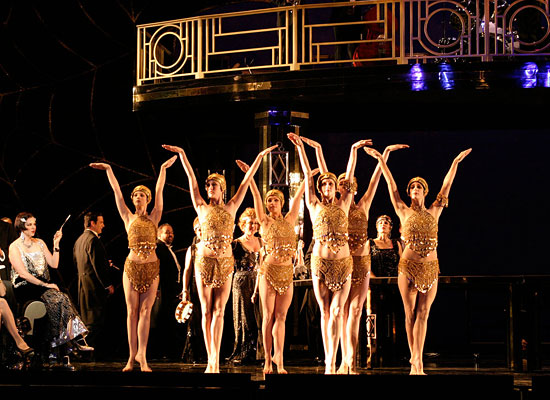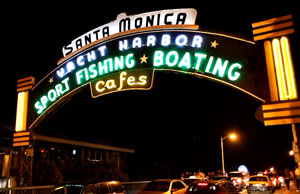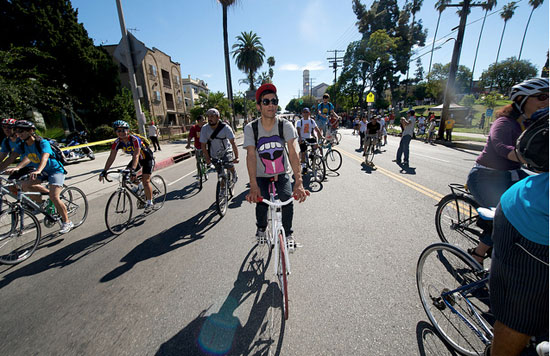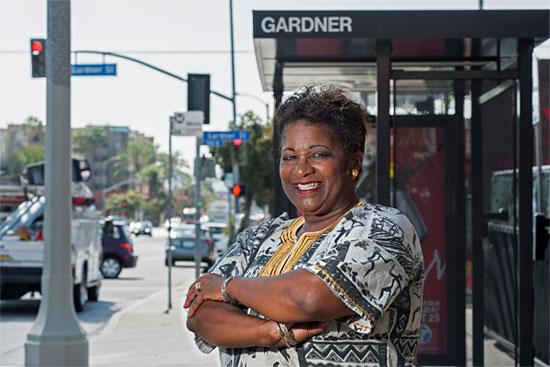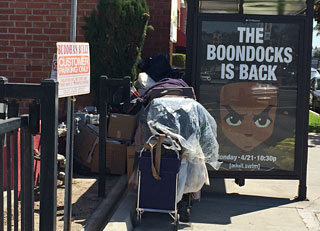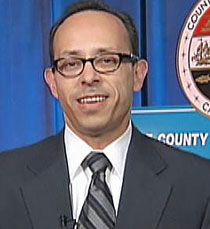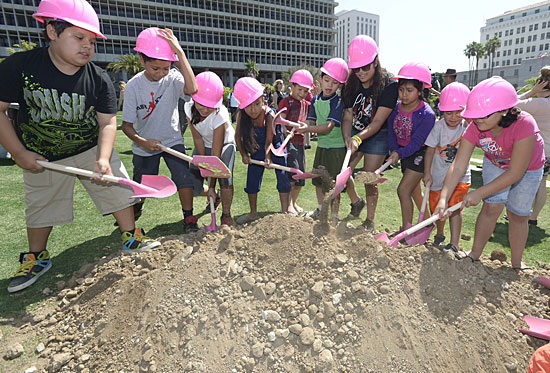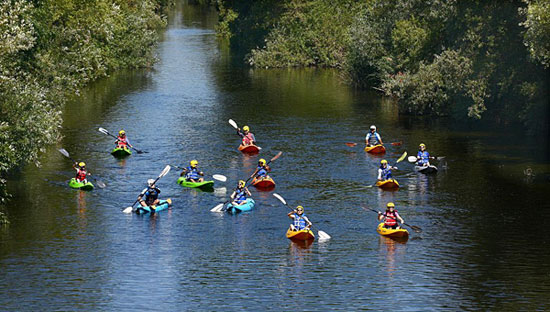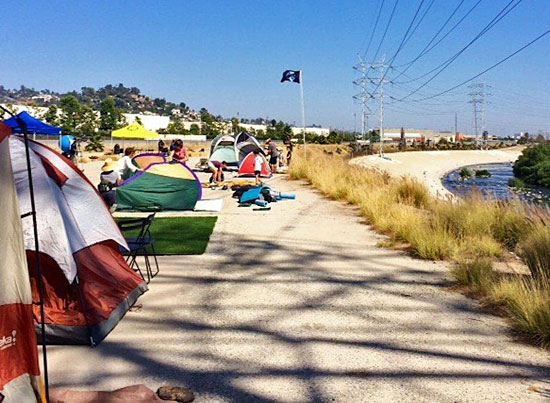Staging Grand Park’s biggest act yet
The pink furniture is being packed off to storage. The splash pad is disappearing under a protective mat. The street closure notices have been circulating for a week and a security detail of more than 1,000 has been assembled.
With Grand Park scheduled to welcome its biggest crowd yet this Labor Day weekend, local authorities have mustered a similarly impressive response to gear up for Budweiser Made In America, the two-day downtown music festival being curated by Jay Z and promoted by Live Nation.
“There are a lot of headline acts and they’re expecting more than 30,000 people each day,” explained Christine Frias, a program manager in the county CEO’s office who is coordinating the departments involved in the deployment.
“I think, with the help of Grand Park, the Sheriff’s Department and all the collaboration that’s going on, this event will be successful. “
Still, she notes, “you have to take extra precautions when there’s going to be alcohol.”
Preparations for the August 30-31 festival have been the talk of the town since April, when Jay Z and Los Angeles Mayor Eric Garcetti announced that the bicoastal music festival would be held this year in downtown’s most popular new park.
Though Grand Park has seen some grand crowds—about 20,000 gathered there for its first New Year’s Eve bash, for instance—they have mostly been free to the public and explicitly family friendly.
And peaceful: Frias said the more than 10,000 people who gathered there for July 4 music and fireworks were so well behaved that none of the park’s plants or furnishings had to be replaced.
But the Budweiser MIA concert is the first attempt to use the 12-acre space as a venue for a major ticketed rock concert, and—though neither Jay Z nor his superstar wife, Beyoncé are among the acts on the lineup—this event is expected to be a doozy, with Kanye West, John Mayer and other big names on the roster. More than 30 bands are expected to play over the festival’s two days.
Three stages, an amusement park ride and an exhibition skate park will dot the lawns between City Hall and the Music Center, and 40 to 50 food trucks will ring the venue. And while all ages will be welcomed, the festival site will allow beer drinking at more than a half-dozen public and VIP beer gardens.
“It’s going to be a couple of long hot days, and hopefully people will mostly consume water, but we are concerned about alcohol consumption,” said Los Angeles Sheriff’s Capt. Chuck Stringham.
About 270 sheriff’s deputies and a similar number of Los Angeles police are expected to be deployed on each day of the festival, along with several dozen Music Center security officers and an unknown number of undercover officers who will be enforcing laws against underage drinking for the state Department of Alcoholic Beverage Control.
Another 370 private licensed security guards are expected to be on hand at the behest of the acts themselves and the concert promoter, according to a spokeswoman from Garcetti’s office. The Sheriff’s Department will handle security within the event perimeter and LAPD will be in charge outside.
Alcohol will be permitted only in the beer gardens, and patrons will be limited to two beers at a time and required to produce valid photo I.D.s, he said, adding that attendees will not be allowed to exit and re-enter the venue.
Frias said the park itself will be braced for the masses. Grand Park is owned by the county and operated by the Music Center, although the surrounding streets are mostly the jurisdiction of the City of Los Angeles. Live Nation is paying $500,000 to the city to cover its costs and $600,000 to the Music Center to cover park rental and county services.
But the promoters must pay extra for any damage, and more than 300 workers per day have been on the site this week, spending an average of 15 hours a day to assemble about 100 tractor trailers’ worth of equipment, according to a spokesman for Live Nation.
Videographers have been filming the lush grounds all week, she said, to establish the park’s pre-festival condition, and the park’s signature hot pink furniture has been stored for safekeeping.
Vulnerable landscaping is being cordoned off with temporary fencing. And, she said, the splash pad around the Arthur J. Will Memorial Fountain also is getting a custom buffer to protect it from a stage that is being installed over it for the festival deejays.
“The splash pad will be turned off and dried, and then they’re putting a 4- to 5-inch rubberized mat on it to cover it and distribute the weight of the equipment on top of it,” said Frias.
Outside the Lines, the construction firm that helped build the splash pad, will oversee the construction to ensure that none of the festival preparations damages the water feature or surrounding tile and LED lights, she said.
Perhaps the trickiest set of preparations is for festival traffic. Already, various downtown streets have been closed this week for delivery of production equipment and stages. (Most of the work has gone on overnight).
Though ticket sales are not as high as the initial daily estimates of 50,000, the crowds are still expected to set records for Grand Park, and organizers have spent months reassuring downtown residents and business owners that the area won’t be inundated.
“But we’ve had major closures in the downtown area before—we know how to do this,” said Aram Sahakian, who oversees special traffic operations for the city Department of Transportation.
On the Fourth of July, for instance, he noted, thousands cars were swiftly ushered in and out of downtown parking structures by traffic control officers who patrolled the park area on foot and on Segways.
“And how about Fiesta Broadway? That used to bring in hundreds of thousands of people,” Sahakian said.
Organizers are urging concertgoers to take public transportation, Sahakian said, and between 7,000 and 10,000 are expected to ride mass transit into the venue. But the Civic Center station—which opens directly into Grand Park—will be closed so that riders can’t bypass the ticket-takers, and to accommodate safety concerns.
Though the Civic Center station does have a second entrance outside the perimeter of the festival, event organizers and law enforcement insisted that the whole station be closed because the bottleneck that would have resulted from channeling thousands of riders at one time into one exit might have overcrowded the platform and created a safety hazard, said Metro spokesman Marc Littman.
So subway riders are being urged to get off at Pershing Square or Union Station and walk the few blocks to the venue.
Meanwhile, Sahakian said, those who drive will be directed to downtown parking garages, though some may have to park as far from the venue as Staples Center or Dodger Stadium, and ride in on shuttles. Extra traffic engineers and traffic control officers will be on hand to help channel traffic toward open parking structures, he said.
“Yes, this is a first time thing for the park, but we’re prepared,” he said. “Hey, we moved the Space Shuttle, right?”

Budweiser Made in America curator Jay Z performing earlier this year with event headliner Kanye West.
Posted 8/28/14

